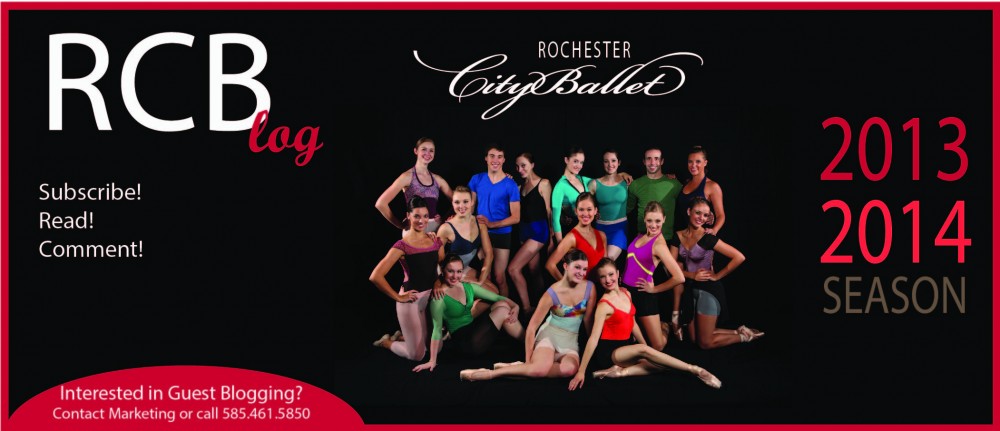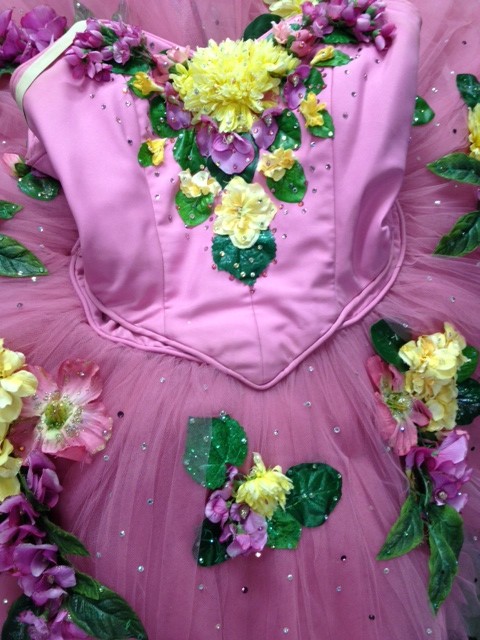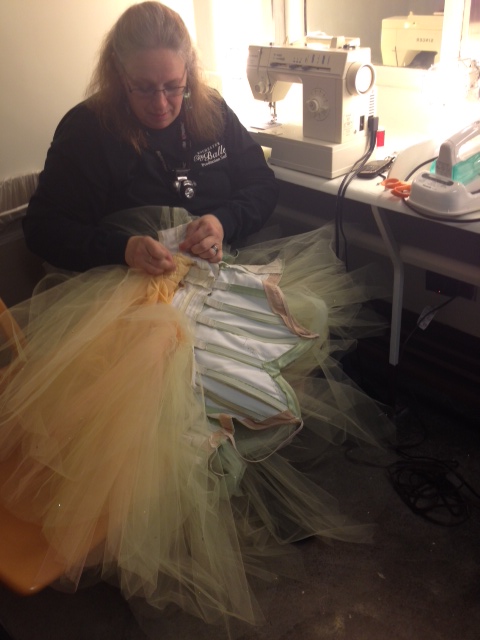By Allison Bohman (Based on an interview with Kathy Kittelberger)
A dancer delicately pirouettes on the tiny tip of her pointe shoe and we watch her light blue, long, tutu made of tulle swirl around her delicate rotating body. Just one moment later, another dancer bounds across the stage, flying through the air in a beautiful leap. We see the strong line and musculature of his legs as they split through the air. All of these qualities that we adore when we watch a live ballet performance are enhanced and completed by the careful costuming of each dancers body—the details of each ballerina’s costume contributes to the overall viewing experience. Especially in a show like Rochester City Ballet’s upcoming production of Cinderella, the costumes play a huge role in transporting audience members into this magical fairytale setting.
Kathy Kittelberger, RCB’s Wardrobe Mistress for over 10 years, knows the ins and out of the importance of costumes for a professional ballet company. Having started to make costumes for her children when they began dancing at a young age, Kathy quickly learned that costumes for dance are different than sewing a curtain or street clothing. The dancer’s costumes must be able to move with their every step. “The arms, legs and torso need a lot of freedom,” Kathy explains. Making a tutu is a very specific and time consuming process that some people actually attend special schools to learn. Through practice, patience and referencing books, Kathy taught herself how to make one from scratch and now her beautiful creations can be seen soaring across stages throughout Rochester.
In Cinderella, many of the costumes are being altered and changed for RCB’s upcoming production in May. The dancers who attend Cinderella’s ball in the show for example, have elegant dresses and suits that need careful altering so that they can still move freely in them. Similarly, the style of tutus has changed over the years, so Kathy is adding additions to some costumes that have been used in the past.
Costuming not only involves sewing and altering what the dancers wear, but also for a production like Cinderella, wigs, makeup, and the timing of quick changes are essential to ensuring the magic of this fairytale ballet. Kathy explains that one of the challenges of this particular show is Cinderella’s 42 second quick change, which takes place in the wings of the stage. Kathy is there at each dress rehearsal and performance (with scissors and needle & thread in hand), ready to make sure everything goes smoothly so that the dancers only need to worry about performing. With only 42 seconds to change out of her gown into rags, it is Kathy’s hope that Cinderella will still have time to “stand at the edge of the wing, breathe and then go!”
Kathy attaches every detail of the dancer’s costumes by hand, along with wardrobe assistant, Christine Chernjavsk and other volunteers. She describes her favorite part of costuming to be the creative process. The season fairies in Cinderella have specific color palettes that match what season they representing. Kathy is asked to consider earth tones, find a fabric and make it work on a moving body. She also loves working backstage with the dancers. She explains that her favorite part is “seeing their joy” when they dance. She is happy that her work in costuming makes the dancers comfortable and really allows them to feel the part they are playing.
In a live ballet, there are many elements that contribute to the overall production. The costumes not only allow the dancers to move freely, but they also help to transport audience members into a new world. The choreography, music, dancing, lighting and costumes are all important parts of the equation. The creativity of Kathy Kittelberger sheds light on the details hidden the fabric of Rochester City Ballet productions.


